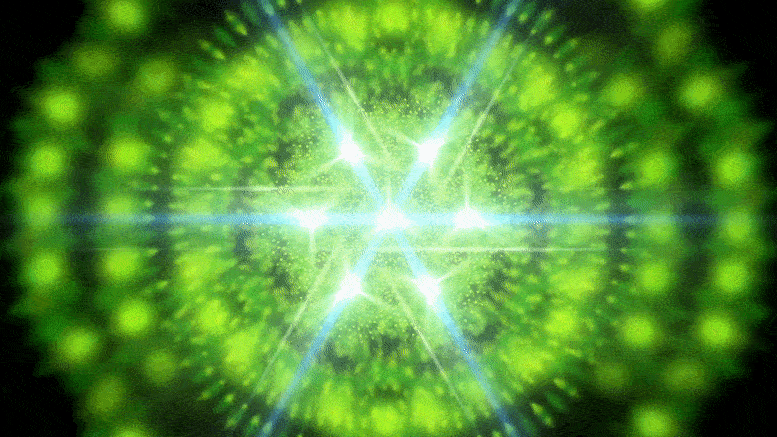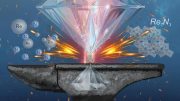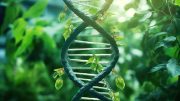
A groundbreaking study reveals how life’s complexity could originate from simple RNA molecules on early Earth. Through experiments demonstrating RNA’s recycling and replication abilities under specific conditions, such as low salinity and high pH, the research suggests life could emerge from minimal molecular sets in environments akin to volcanic islands. This finding challenges prior assumptions about RNA’s evolution and underscores the potential for life’s emergence in simple, cold prebiotic conditions.
Recent research illustrates how RNA molecules’ chemical characteristics might have played a crucial role in the development of complex life forms.
How did complex life manage to evolve on the early, inhospitable Earth? Initially, ribonucleic acid (RNA) must have existed to carry the first genetic information. For these biomolecules to build-up complexity in their sequences, they needed to release water. However, on the early Earth, which was predominantly covered in seawater, this process was challenging.
In a paper recently published in the Journal of the American Chemical Society (JACS), researchers from the team of LMU professor Dieter Braun have shown that in RNA’s struggle with the surrounding water, its natural recycling capabilities, and the right ambient conditions could have been decisive.
“The building blocks of RNA release a water molecule for every bond they form in a growing RNA chain,” explains Braun, spokesperson for the Collaborative Research Centre (CRC) Molecular Evolution in Prebiotic Environments and coordinator at the ORIGINS Excellence Cluster. “When, conversely, water is added to an RNA molecule, the RNA building blocks are fed back into the prebiotic pool.”
This turnover of water works particularly well under low saline conditions with high pH levels. “Our experiments indicate that life could emerge from a very small set of molecules, under conditions such as those prevailing on volcanic islands on the early Earth,” says Adriana Serrão, lead author of the study.
A New Understanding of RNA Evolution
Under these conditions, RNA has the ability to split without adding a water molecule. The end of the RNA strand remains water-free and can spontaneously re-form new RNA bonds. Braun’s laboratory demonstrated that the rebinding of this split RNA works efficiently and with remarkable precision when copying the sequence information. This process only takes place when the RNA building blocks are bound to a template RNA molecule with precisely matching base pairs in a double-stranded configuration. This produces a copy of the existing RNA strand before it disintegrates through the addition of water.
It had previously been assumed that RNA can only copy itself by ‘randomly’ constructing sequences of around 200 nucleotides in length – so-called ribozymes. However, ribozymes can operate only in saline, and thus RNA-hostile, environments. As a result of this new research, these complex ribozyme sequences in the early stages of RNA evolution are not necessary. “The precision is comparable to the copying of RNA achieved by ribozymes,” says Sreekar Wunnava, also lead author of the study. “This means that an RNA world could arise without the prior necessity for long complex sequences.”
Early life thus consisted of a very simple metabolic process whereby RNA sequences were copied by means of continuous replacement with recycled molecules. All that is needed for this to happen is an alkaline freshwater environment such as still exist today on volcanic islands like the Hawaiian archipelago or Iceland. “And so life could have emerged from a simple, cold prebiotic primordial soup of RNA building blocks,” explains Braun. Although the reactions take place very slowly under these conditions and require several days to complete, there was no shortage of time at the start of evolution and the cold freshwater refuges on primeval volcanic islands allowed RNA to survive on the otherwise inhospitable early Earth.
Reference: “High-Fidelity RNA Copying via 2′,3′-Cyclic Phosphate Ligation” by Adriana Calaça Serrão, Sreekar Wunnava, Avinash V. Dass, Lennard Ufer, Philipp Schwintek, Christof B. Mast and Dieter Braun, 19 March 2024, Journal of the American Chemical Society.
DOI: 10.1021/jacs.3c10813









Before RNA there were only amino acids. Richard Dickerson, 1978 Scientific American, commented.
”The central problem in understanding how the polymers were formed on the primitive earth is understanding how reactions requiring both the input of energy and the removal of water could take place in the ocean.”
That one part of the central problem. The other part is even more important… the need for protection of the initial amino acids forming peptide bonds from the young Sun’s damaging UV radiation. What that means is the need for free oxygen in the stratosphere to form an early ozone screen. Traditional prebiotic conditions assume anoxic atmosphere. That is clearly wrong for the warm little pond hypothesis as is the submarine hydrothermal vent theory.
Many newfound forms of life appear to be forming in undersea volcanos. Could the water be of sufficient depth to protect the amino acids from the sun’s radiation?
They have no explanation for how random abiotic organic molecular life precursors were only left handed. How were racemic forms prevented or eliminated?